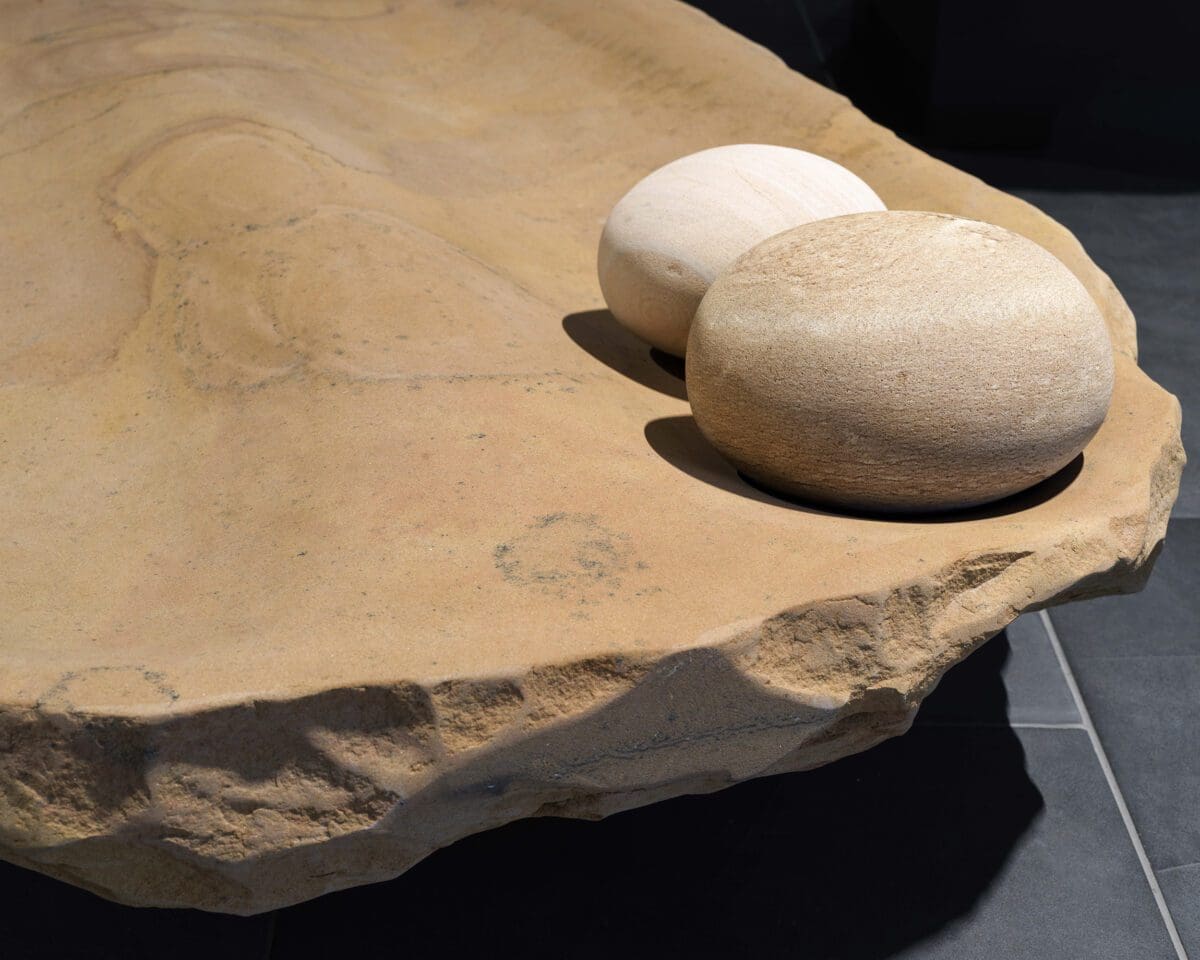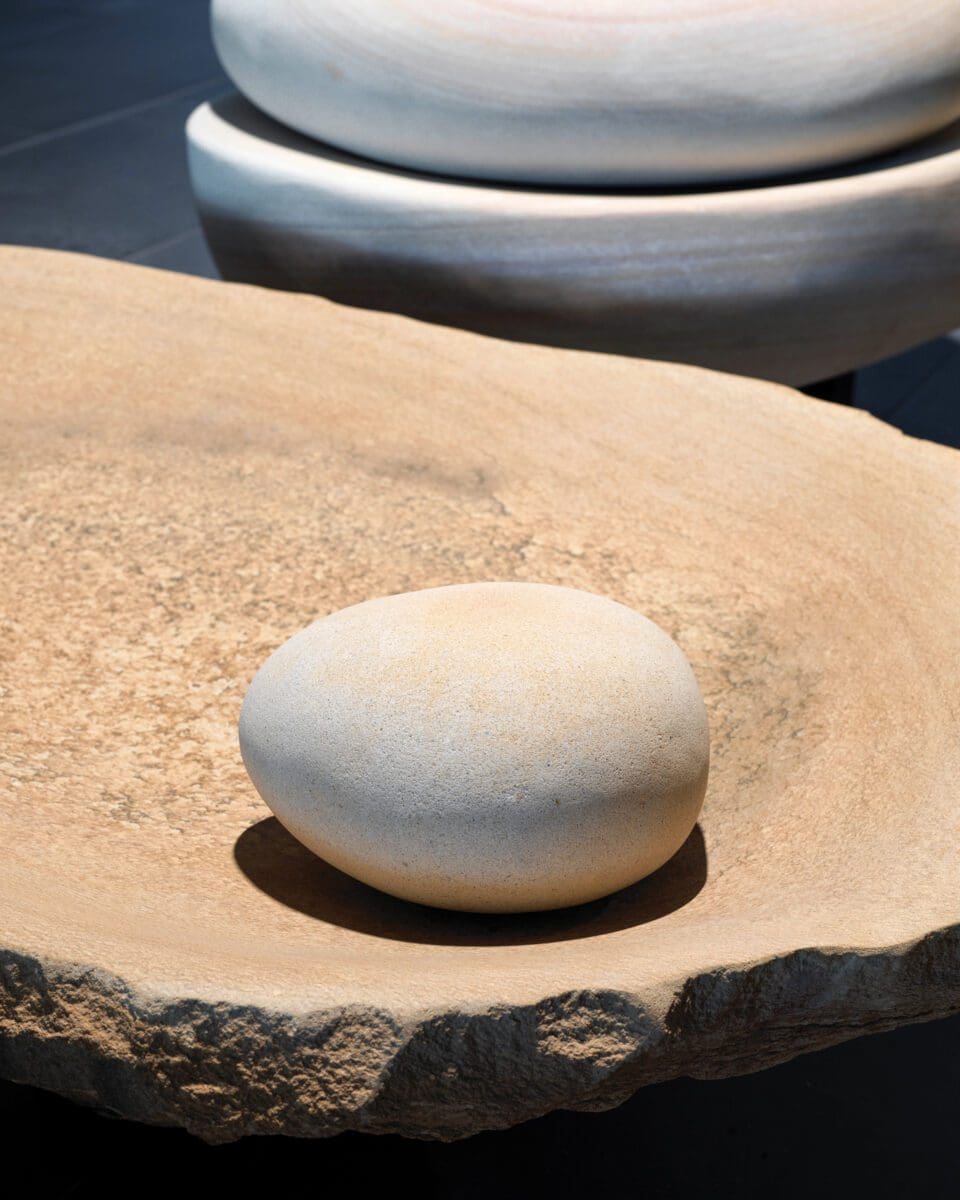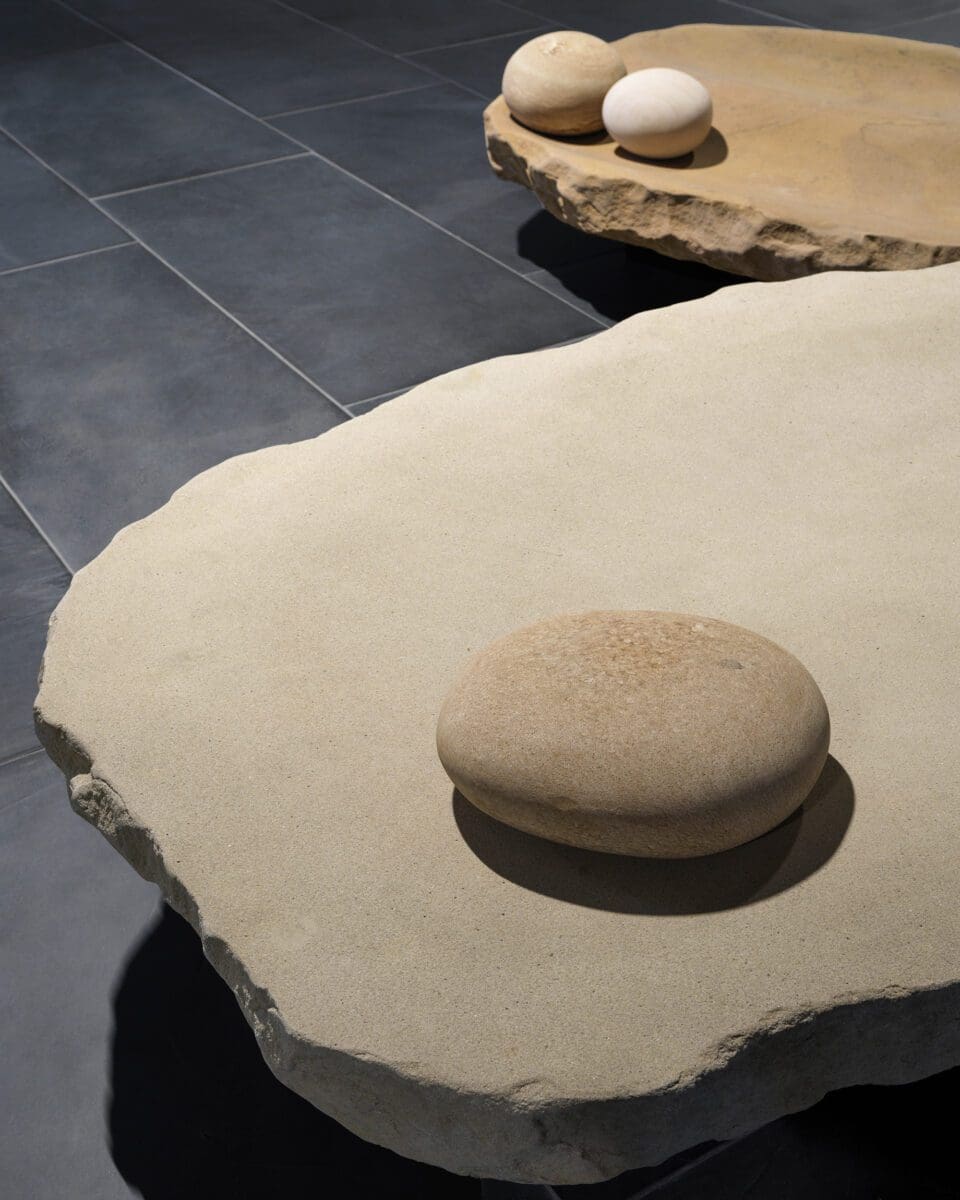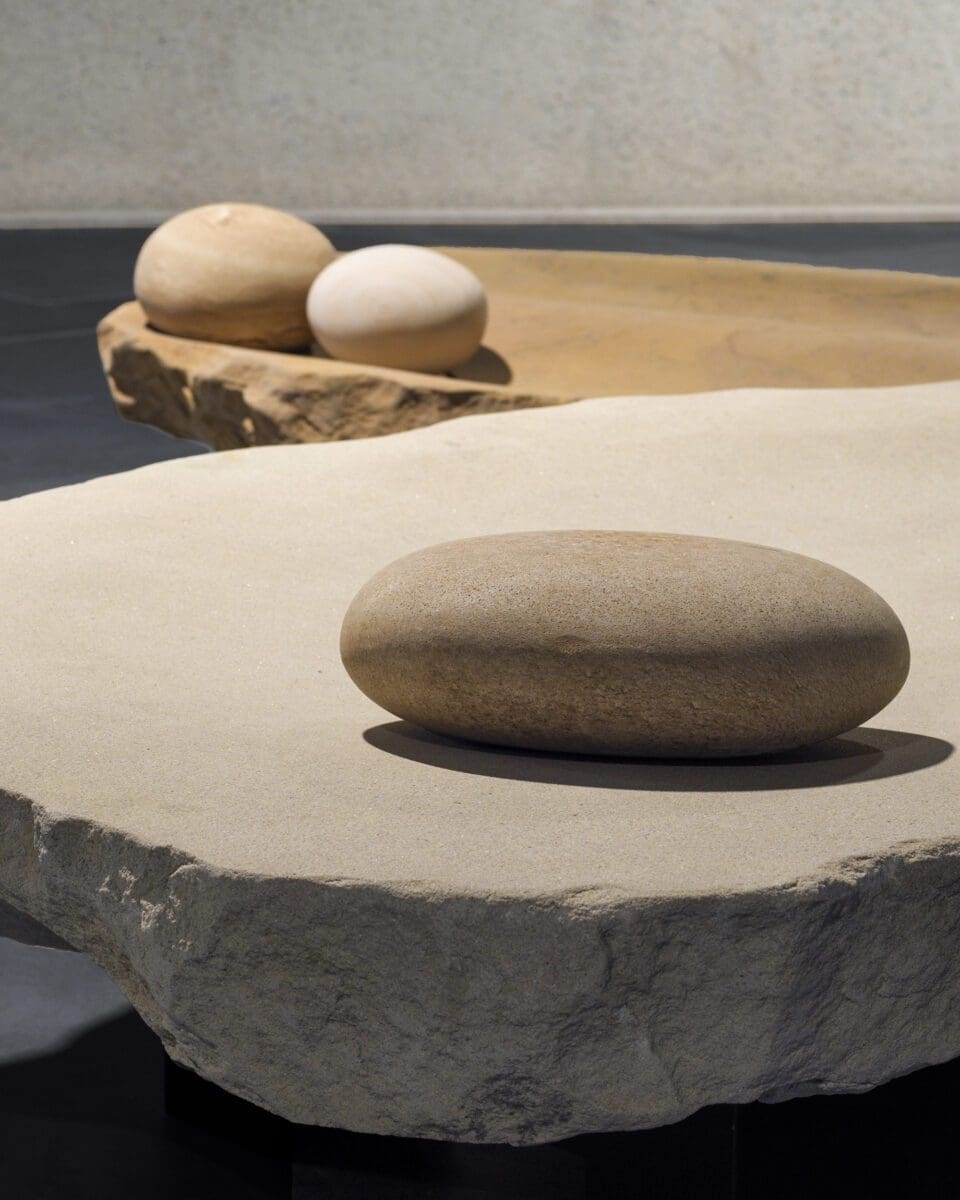
Piercing the veil
A new exhibition at Buxton Contemporary finds a rich complexity in the shadowy terrain between life and death.

Jonathan Jones, Wiradjuri/Kamilaroi peoples, Dr Uncle Stan Grant Snr AM, Wiradjuri people, collaborator, Beatrice Murray, Wiradjuri people, collaborator, untitled (walam-wunga.galang) (detail and installation view), 2020–21, National Gallery of Australia, Kamberri/Canberra, gift of Wesfarmers © Jonathan Jones

Jonathan Jones, Wiradjuri/Kamilaroi peoples, Dr Uncle Stan Grant Snr AM, Wiradjuri people, collaborator, Beatrice Murray, Wiradjuri people, collaborator, untitled (walam-wunga.galang) (detail and installation view), 2020–21, National Gallery of Australia, Kamberri/Canberra, gift of Wesfarmers © Jonathan Jones

Jonathan Jones, Wiradjuri/Kamilaroi peoples, Dr Uncle Stan Grant Snr AM, Wiradjuri people, collaborator, Beatrice Murray, Wiradjuri people, collaborator, untitled (walam-wunga.galang) (detail and installation view), 2020–21, National Gallery of Australia, Kamberri/Canberra, gift of Wesfarmers © Jonathan Jones

Jonathan Jones, Wiradjuri/Kamilaroi peoples, Dr Uncle Stan Grant Snr AM, Wiradjuri people, collaborator, Beatrice Murray, Wiradjuri people, collaborator, untitled (walam-wunga.galang) (detail and installation view), 2020–21, National Gallery of Australia, Kamberri/Canberra, gift of Wesfarmers © Jonathan Jones

Jonathan Jones, Wiradjuri/Kamilaroi peoples, Dr Uncle Stan Grant Snr AM, Wiradjuri people, collaborator, Beatrice Murray, Wiradjuri people, collaborator, untitled (walam-wunga.galang) (detail and installation view), 2020–21, National Gallery of Australia, Kamberri/Canberra, gift of Wesfarmers © Jonathan Jones
A Wiradjuri and Kamilaroi artist of south-east Australia, Jonathan Jones has created works, from prints to light pieces to vast installations, centred on his relationship to Country and community. His latest work, untitled (walam-wunga.galang), showing at the National Gallery of Australia, is a monument to the cultural practice of bread making.
In the early 1990s, a 32,000-year-old grindstone unearthed in New South Wales was revealed as being used for grinding seeds collected to make flour and bread. As writer and farmer Uncle Bruce Pascoe describes, the First Peoples of this region are some of the world’s oldest breadmakers which shifts settler narratives of Western nation building and speaks to the endurance of First Nation knowledge systems. Jones’s work at NGA features a series of sandstone grindstones, accompanied by a soundscape in Wiradjuri language.
These stories are vital at a moment when First Nations sovereignty and continuing cultural practice is gaining momentum yet is often tokenised through mainstream agendas. In an illuminating conversation, Jones considers the role of his work in an era where recognition of Aboriginal people is rapidly increasing, but appreciation of the accomplishments of a 60,000-year-old culture remains varied. Within these complex and vexing tensions Jones demonstrates that the power of story and cross-cultural community building remains strong. In the words of his long-time collaborator, and journalist and media presenter, Dr Uncle Stan Grant, “Country needs us, and if we look after it, Country will look after us.”
Timmah Ball: Can you describe how untitled (walam-wunga. galang) evolved?
Jonathan Jones: Uncle Stan and I started doing projects together a while ago with the idea to develop a series of projects based around Wiradjuri philosophies and knowledge. We started talking about materials like madhan (wood), galing (water), giran (wind), wiiny (fire) and walang (stone) and thinking about elemental ideas that have cultural knowledge embedded within them.
In this way the project also builds on the methodology we have developed that is a response to the fracturing processes of colonisation that many of our communities in the south-east have experienced, and works like untitled (walam-wunga.galang) are conceived to repair knowledge and strengthen us. Sometimes it’s through research and analysing things like old anthropological texts, and then me going back to Uncle Stan and showing him. Or sometimes it’s him telling me something he remembers his granddad saying, and sometimes it’s about talking to other community members, or looking at those words and trying to unpack what they mean. So, the work fits into a bigger methodology and practice which very much builds on Uncle’s process of reviving our language.

TB: The work asks that we rethink the foundations of so-called Australia. You state, “The process of shaping stone with stone speaks to our enduring presence and the strength of our knowledges.” Yet at the same time there has been a consistent movement to critique or undermine the research of people like Uncle Bruce Pascoe, whose book Dark Emu cites evidence of pre-colonial agriculture undertaken by Aboriginal and Torres Strait Islander peoples— which influenced your work. I wanted to know how the work feels in this context, and if it has a role in ameliorating these ideological conflicts?
JJ: It’s really difficult. Uncle Bruce has copped it unimaginably from a small but very vocal part that seem to be terrified of ideas and upsetting the status quo. You imagine that we live in a society that has started to change and that’s becoming more progressive. But then you look at the vilification of Uncle Bruce who has simply championed ideas— ideas that are in the colonial journals. It is scary. I don’t understand what message we’re sending to young people and encouraging them to think and have ideas that don’t fit the norm, and that is a real worry. The audio piece [for the NGA work] has Uncle Bruce reading some of those historical accounts [of pre-colonial agriculture] that are so central to his argument. But I think people still aren’t getting it.
The Australian Museum keeps the grindstone that is 32,000 years old, which was collected from Cuddie Springs in central New South Wales—but it is not on display. It is a piece of archaeological evidence that is twice as old as Egyptian breadmaking tools and it’s literally sitting in a basement. Not that many people get to see it. When I went to look at it, I had to ask for permission to take a photo of it from the non-Aboriginal archaeologist who led the excavation (and credit her in the photo caption), who proceeded to lecture me that the term “agriculture” can’t be used in the context of Australian Aboriginal culture.
Sometimes you are in these moments where you think, “Okay, people are finally starting to get this, maybe we have a chance.” But then you look over your shoulder and see how Uncle Bruce has been treated; how objects like the grindstone, which should be a national treasure, is being treated, and you know we haven’t come too far at all.
When I speak to people about our relationship to kangaroo grass and describe it is as one of the biggest grain species that we have on this continent and our people have been burning, collecting, harvesting and making bread from it and feeding our families for at least 32,000 years—I don’t know that they fathom what that actually means and how deep that connection is. We are that plant. It’s in our DNA. I’m sure these plants will end up becoming hybridised and engineered to support farming in our ever-increasing global environmental crisis as it’s so adaptable to arid regions. But are we having the conversations that assert that plant to our culture? And who’s going to remunerate Aboriginal communities for that knowledge when it gets lifted and taken to the world providing global food assurances? Will Aboriginal people benefit from our plants into the future?
I get worried when I see people like Uncle Bruce getting attacked—I know I can’t do much, I’m just an artist. But by creating these works I feel like I’m really trying to contribute to the bigger conversation. We’ve gone ahead and made these projects about the ideas of agriculture, if that word is even appropriate within our context, and engaging with other community members and creating opportunities for people who it matters to the most: young ones.
The [NGA] project also engaged with Lucy and Lowanna Murray, who choreographed a dance piece around the actions of the walam-wunga. galang (grindstones). They are dancing on their dad’s Country near Cowra and their mum, Beatrice Murray, is singing the song, which is based on Uncle Stan’s words about looking after Country with fire so the grasses come back to harvest. The whole process and artwork engages multiple generations and mediums to tell the story.

TB: First Nations art from this continent has been growing in prominence globally and I was wondering how you have experienced this and whether there are synergies, possibilities and collaborations across Indigenous cultures globally? For example, I’ve seen your work in various places like the Art Gallery of Western Australia and in Singapore, and wanted to know how you feel about situating yourself in other geographies and how these stories travel but stay connected?
JJ: I rarely show overseas, it’s not what I’m interested in. I’m much more interested in having a show in Dubbo than Paris. Contextual stories and connection are what’s important to me. Aboriginal ways of seeing things are relational, and everything makes sense because of our relationship to people, plants animals and Country. For me, that’s important.
I think I’ve only done a few projects overseas. A project in Canada that involved working closely with Métis people, or another with Ngāi Tahu mob in Dunedin, Aotearoa, and more recently I worked on a project in France which focused on reclaiming Australian material that went to France. These projects are about finding real connections that make sense for me and my work. Showing work in Singapore as part of the touring show Ever Present: First Peoples Art of Australia was for me an anomaly.
I don’t often make work that can be picked up and moved. I was hoping that Lucy and Lowanna Murray could have travelled with the NGA work, and performed to make a new connection and keep the stones company, but that didn’t happen.
For me, the process that I’m always trying to do is collaborate and engage with community in meaningful ways. This was a major part of the project we did in France, which was titled untitled (transcriptions of country). It involved reclaiming collections of Australian native plants, animals and objects, collected by the French ‘explorer’ Captain Nicolas Baudin in 1800 to 1803 and taken back to France. Instead of just working with Aboriginal communities, I was lucky enough to work with migrant communities and groups, mainly women who had recently migrated to Australia, predominantly from India and Afghanistan.
They embroidered the Australian plants held in the French herbarium collection. Embroidery is a strong part of their cultural background, but as migrants they are still understanding Australian plants and through this process of embroidering, they closely studied these native plants. And at the same time, I started introducing them to Aboriginal Elders from Sydney, who told them stories about the plants and the Aboriginal history of Sydney. It gave them this opportunity to talk to local Sydney Elders and learn knowledge through plants. And in return their embroidery helped to return the plants back to the community.
Something really beautiful happened in that project where both communities really understood each other. These migrant communities had been affected by so many things, so when you sit down as an Aboriginal person and tell them your stories, it’s like you are speaking to people who are listening and who understand without prejudice or judgment. I feel like most of my life as an Aboriginal person, you walk into a room and from experience you know that everyone’s probably not going to believe you.
But with these women, you don’t have that problem: they are listening, and they are hearing you and they are understanding. I think this is a really rare thing for us as Aboriginal people and for me it was a really rewarding experience. I’ll always be very grateful to these ladies.
TB: I’m really drawn to your site-specific work like arrangal dyara (skin and bones), 2016, and your collaborations, as you’ve just described. I was really grateful to see your work in the performance Tracker, a co-production between Ilbijerri Theatre Co and Australian Dance Theatre (ADT) and was mesmerised by your set design and how it elevated the performance and themes. Can you speak to working in these contexts and its impact on your practice?
JJ: It was really interesting working with Dan Riley from ADT. Performance is such a different world. For me, it was about conceptualising the space, the circle, for the story to be told. The circle was created with layers of curtains which could be used as a screen but also as a backdrop where the audience could see through it. It’s became something the performers physically engaged with.
But what is great with all these projects is engaging with other artists and young people in particular, the next generation coming up. I got to collaborate with Merindah Funnell, who is another brilliant Wiradjuri artist coming up. Merindah is from the Riley clan, so it was a perfect fit. It was a very new process but I was happy to bring many of the principles I’ve learnt from Elders like Uncle Stan to the process.
‘untitled’ (walam-wunga.galang)
Jonathan Jones with Dr Uncle Stan Grant Snr AM and Beatrice Murray
National Gallery of Australia (Canberra ACT)
Until 23 July
This article was originally published in the May/June 2023 print edition of Art Guide Australia.